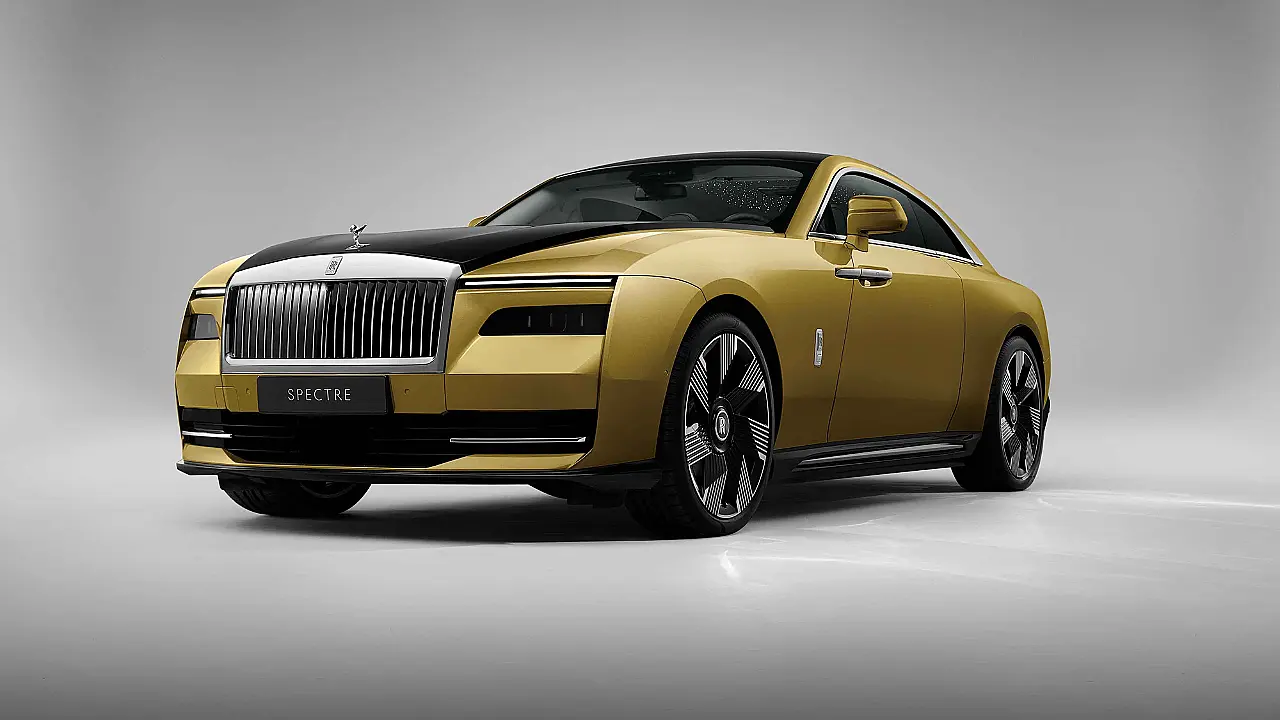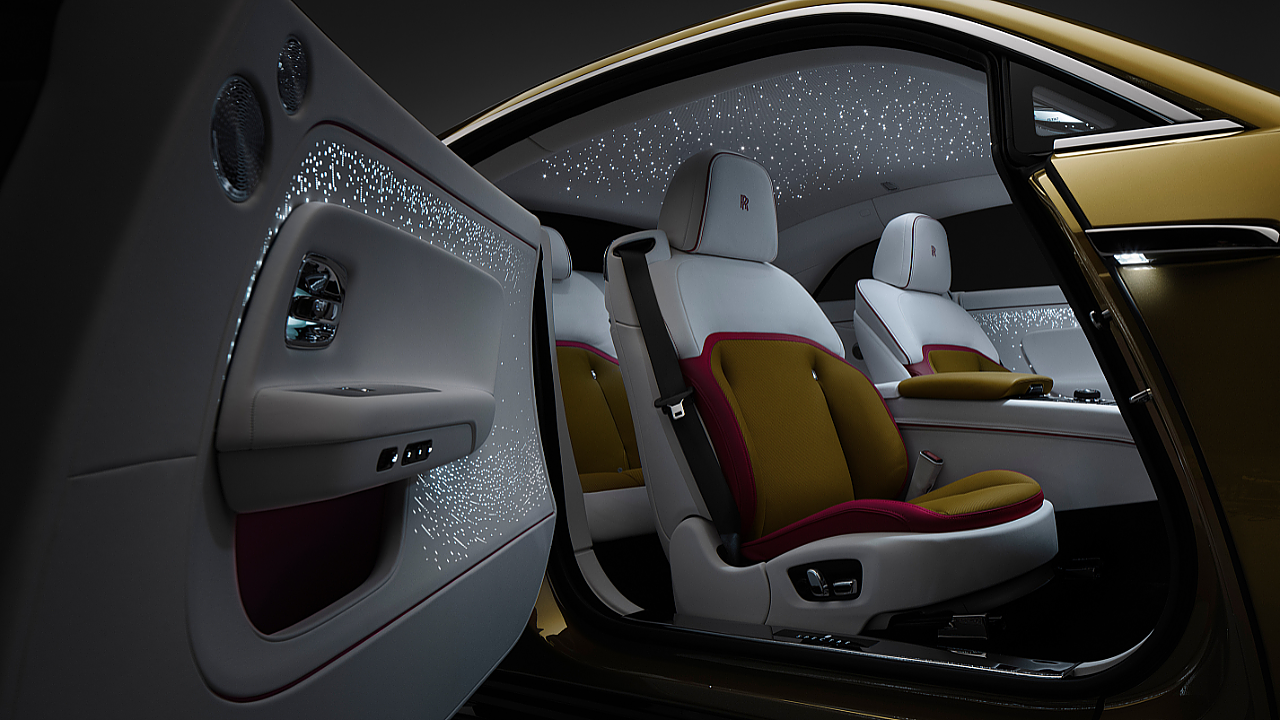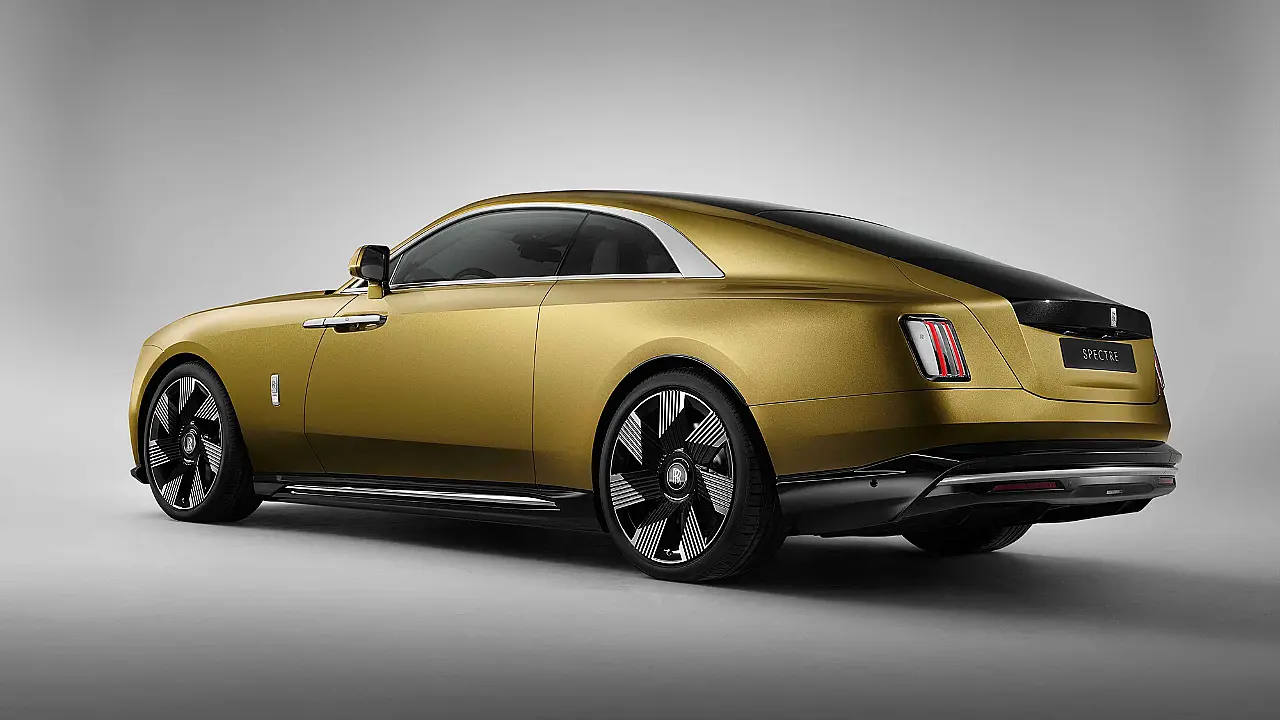
The global automotive canvas has been changing quickly over the last decade. The market has moved from a preference for sedans and long cars to high-riding SUVs, either luxury or sports.
Meanwhile, the need for fuel to power these vehicles are also changing due to the deteriorating climatic conditions around the world.
To this extent, many renowned and legacy carmakers are moving out of their comfort zone to move with the market. One such automaker is the British luxury carmaker Rolls Royce. In 2018 the carmaker introduced its first-ever SUV, the Cullinan, in its then 118 years of history.
Now, the British carmaker has another first up its sleeve, the Spectre. Being the first EV from the marquee, Rolls Royce defines the Spectre as ‘more than a motor car, it is a statement of intent and a symbol of a bright, bold future as Rolls-Royce progresses into an all-electric era.’
Notably, with the Spectre, the company confirms that the technology has reached a standard that can contain the Rolls-Royce experience. To that end, Rolls-Royce has confirmed that by the end of 2030, its entire product portfolio will be fully-electric.
Torsten Müller-Ötvös, Chief Executive Officer, Rolls-Royce Motor Cars, said, “Spectre possesses all the qualities that have secured the Rolls-Royce legend.”
In 1900, Charles Stewart Rolls, Co-Founder, Rolls-Royce, noted that electric cars are noiseless and clean. There is no smell or vibration. Therefore, they should become very useful when fixed charging stations can be arranged.
Speaking of the new coupe, a spiritual successor to Phantom Coupé, the Spectre is based on Rolls-Royce 3.0 platform, focusing on electrification and connected technology.
Notably, 2003 saw the first Goodwood-era Phantom, built upon its own bespoke architecture. This renaissance of the brand was Rolls-Royce 1.0.
Following this, the ‘Architecture of Luxury’ was conceived – a new, highly flexible all-aluminium spaceframe architecture and visionary engineering feat that could be tailored for electric drive, as well as today’s Phantom, Cullinan and Ghost models, and Coachbuild projects. This expansion of the marque’s offering was Rolls-Royce 2.0.
In its third generation, the platform’s aluminium sections and the battery's integration into the motor car's structure have enabled the Spectre to be 30% stiffer than any previous Rolls-Royce.
Additionally, the architecture's flexibility has allowed engineers to place the floor halfway between the sill structures rather than on top or underneath them.
Moreover, a channel has been created for wiring and climate control pipework between the battery and the floor, with the battery mounted underneath, providing a perfectly smooth underfloor profile.
This not only creates a low seating position and enveloping cabin but realises a secondary function for the battery – almost 700kg of sound deadening.
Developments Underneath
Unlike the other motor vehicles from the stables of Rolls Royce, the Spectre will not feature the company’s bespoke 6 ¾ V12 but rather a set of electric motors on each of the wheels, making it a 4WD vehicle.
Although the battery specifications have not been revealed yet, the claimed WLTP range from the 430 kW and 900 Nm powertrain of Rolls Royce Spectre stands at 323 miles or 520 kms with a power consumption of 2.9 mi/kWh or 21.5 kWh/100km. While the claimed 0-60 mph time for the EV is at 4.4 seconds.
Measuring 5,453 mm in length, 2,080 mm in width and 1,559 mm in height, the vehicle weighs in at 2,975 kg. To manage the heft, Rolls Royce has reworked on its renowned suspension, ‘Planar suspension’.
Planar suspension is an orchestra of systems with precisely defined responses to driver inputs and road conditions, made possible by the latest software and hardware developments, delivering Rolls-Royce’s hallmark ‘magic carpet ride’.
Using a suite of new hardware components and leveraging Spectre’s high-speed processing capabilities, the Planar system can decouple the car’s anti-roll bars allowing each wheel to act independently, preventing the rocking motion that occurs when one side of a vehicle hits an undulation in the road.
This also reduces high-frequency ride imperfections caused by shortcomings in road surface quality.
Additionally, once a corner is identified as imminent, the Planar system recouples the components and stiffens the dampers; the four-wheel steering system is then prepared for activation to ensure effortless entry and exit.
Under cornering, 18 sensors are monitored, and steering, braking, power delivery and suspension parameters are adjusted so that Spectre remains stable. The result is effortless control.

Bespoke Design
Speaking of the design, from the front, Spectre’s split headlight treatment is intersected by the widest grille ever bestowed on a Rolls-Royce. Interestingly, 22 LEDs are used to illuminate the signature ‘Pantheon grille’ to remind viewers about the electric Rolls Royce.
The vanes of the Pantheon grille are now smoother in section and have a flusher fit, designed to help guide the air around the motor car’s front.
Interestingly, for the EV, Rolls Royce has also changed its iconic ‘Spirit Of Ecstacy’, which is now shaped more aerodynamically, thanks to its shirked wingspan. All these changes at the front have allowed the carmaker to reduce the drag coefficient to 0.25cd, making the Spectre Rolls-Royce’s most aerodynamic motor car ever.
While at the side, the new EV features a fastback silhouette and the largest single-body panel ever produced for a Rolls-Royce, which extends from the A-pillar to the luggage compartment while sitting on 23-inch wheels.
Meanwhile, the jewel-like vertical tail lamps are colourless for neutrality in anticipation of the myriad colourways selected by clients during the commissioning process.
Spectre’s interior suite offers clients near-infinite Bespoke possibilities, as with all Rolls-Royce motor cars. The new front seat design has been inspired by British tailoring, with lapel sections that can be rendered in contrasting or matching colours to the main base. Bespoke stitching, embroidery, and intricate piping have, as ever, been considered in their inception.
Additionally, for the first time on a series production Rolls-Royce, Spectre is available with Starlight Doors, which incorporate 4,796 softly illuminated ‘stars’.
The coach doors can also be commissioned with a backdrop of wood Canadel Panelling, which takes its name from the cove in the South of France where Sir Henry Royce and his design team spent their winters.
Also a first for the Rolls Royce customer is the bespoke design they can commission beyond the physical world and into the digital architecture that underpins SPIRIT.
SPIRIT manages the motor car’s functions, seamlessly integrating the marque’s Whispers application, allowing clients to interact with their car remotely and receive live information curated by the marque’s luxury intelligence specialists.
Inspired by its clients’ love of bespoke timepieces, the colour of the dials can now complement the interior hue of the motor car.
Market Launch
Although Rolls Royce has unveiled the Spectre EV, the product is still under testing. The process, to date, has seen extreme driving conditions with the development of the motor car beginning just 55km from the arctic circle in Arjeplog, Sweden, at temperatures as low as -40 degrees centigrade, and it will continue across Southern Africa, in temperatures of up to 55 degrees centigrade.
Notably, 55% of testing is on the roads on which many production Spectres will be driven, including the French Riviera.
Interestingly, it was on the Côte d'Azur that Spectre’s digitally integrated evolution of the new Planar suspension system was finalised.
With many months of testing and optimisation of Spectre, the company plans to start the deliveries to its first customers by the fourth quarter of 2023.

Notably, the new EV from Rolls Royce is to be placed between the Cullinan and the Phantom. “This is the start of a bold new chapter for our marque, our extraordinary clients and the luxury industry. For this reason, I believe Spectre is the most perfect product that Rolls-Royce has ever produced,” added Müller-Ötvös.
Also Read
Rolls Royce, Hyundai To Work On Hydrogen Fuel Cell